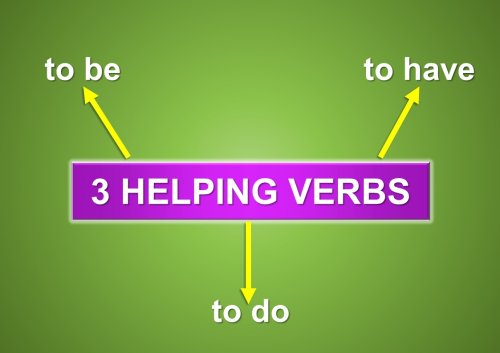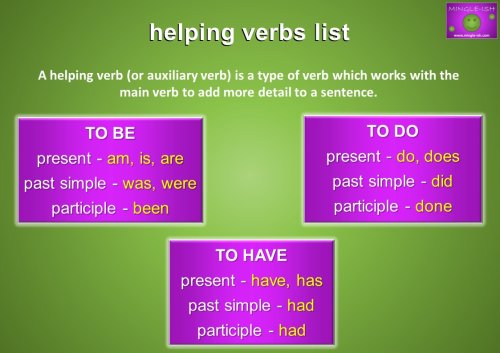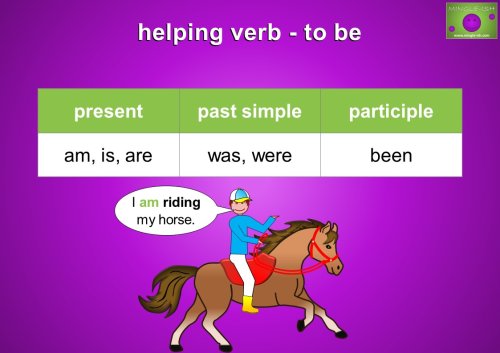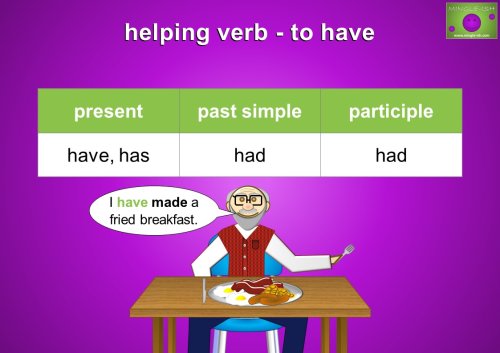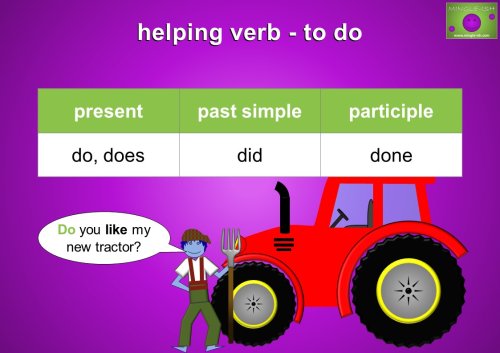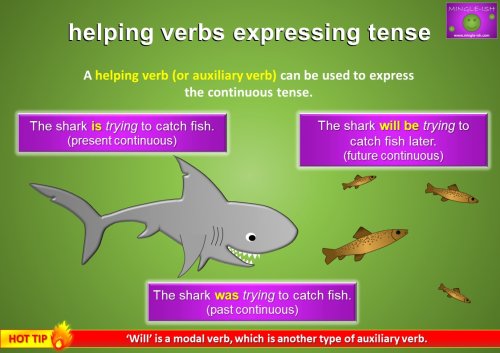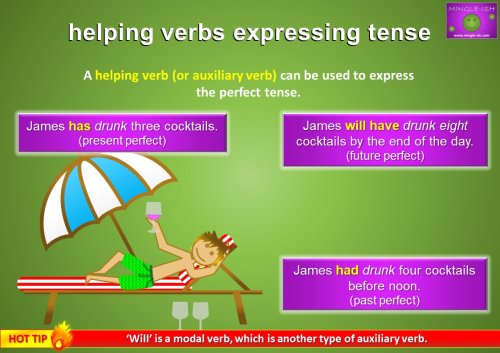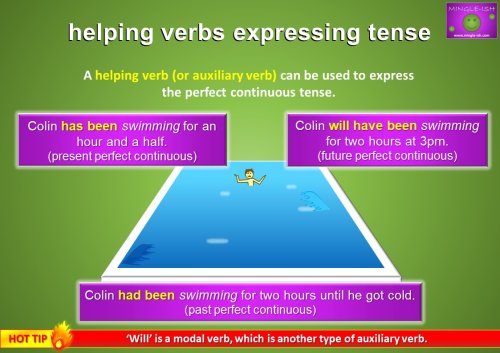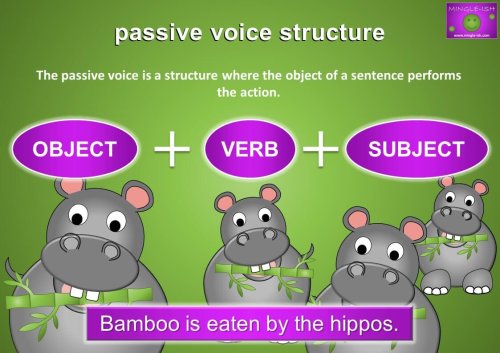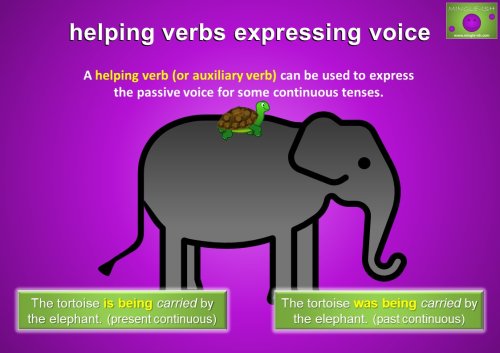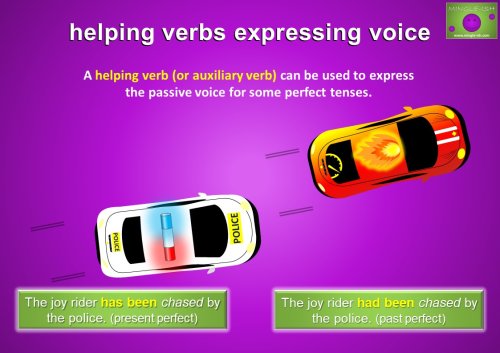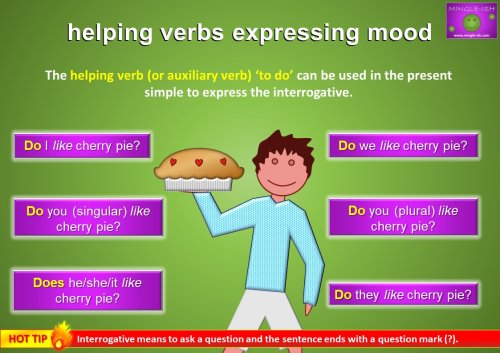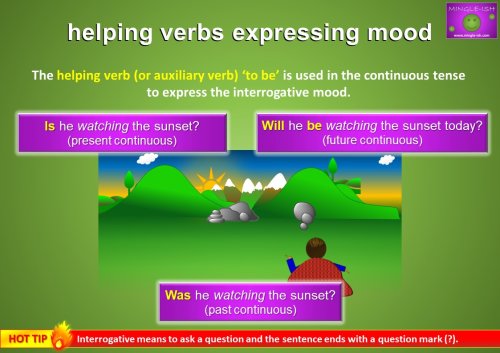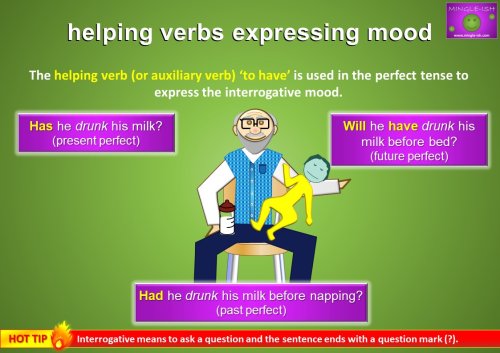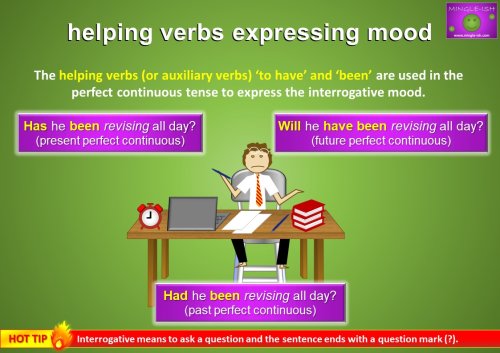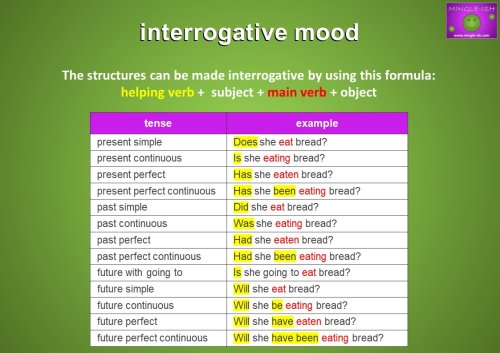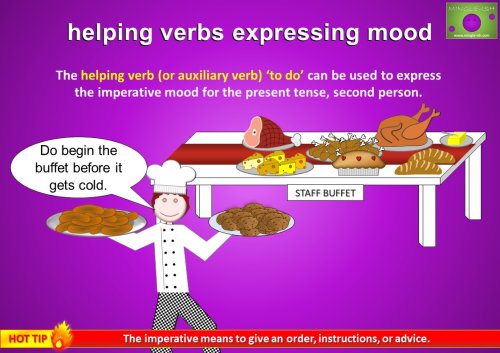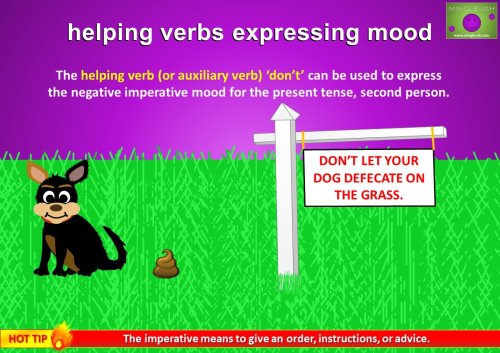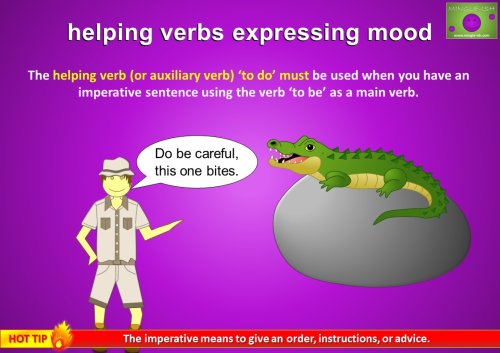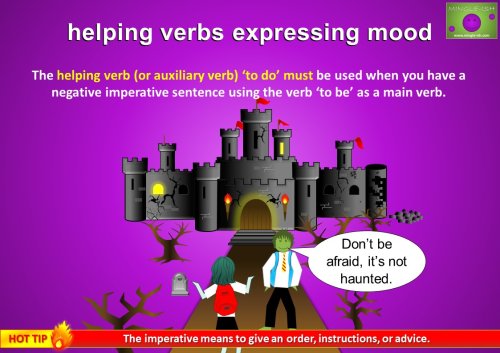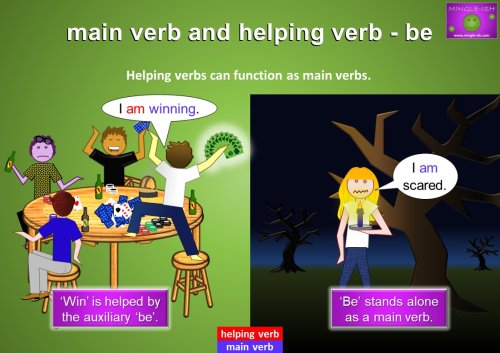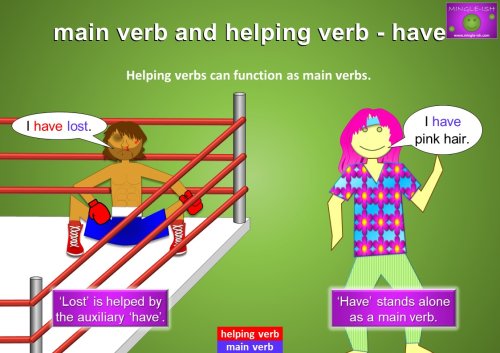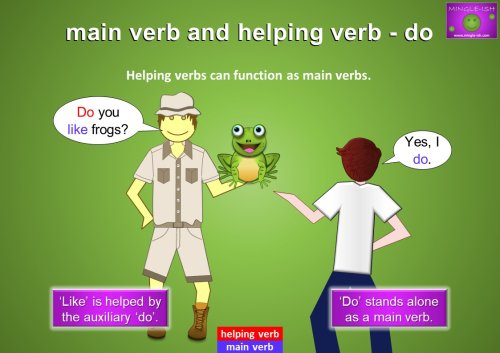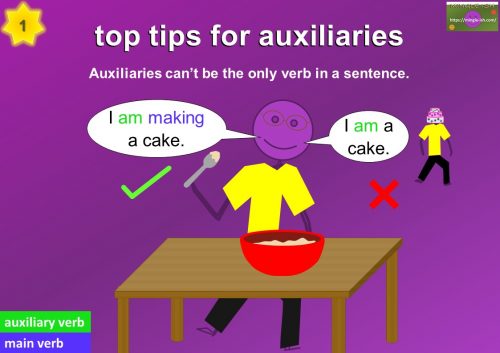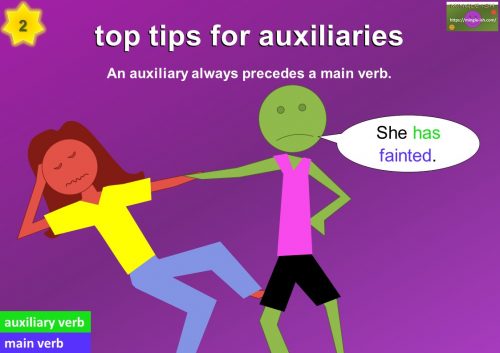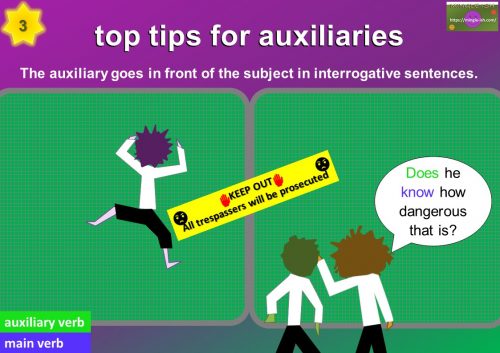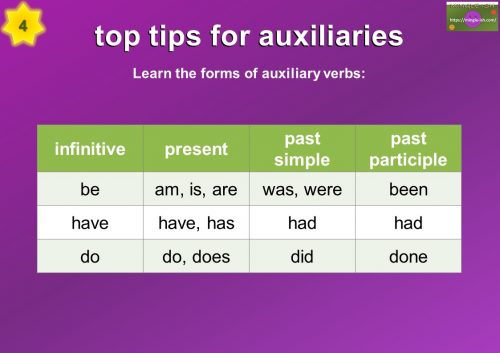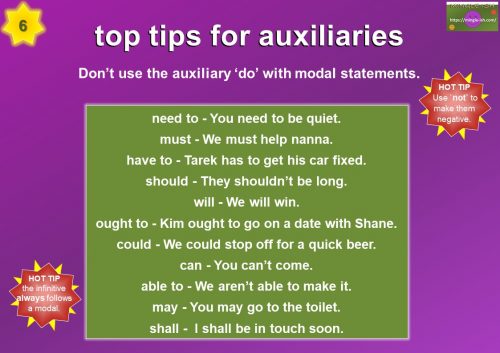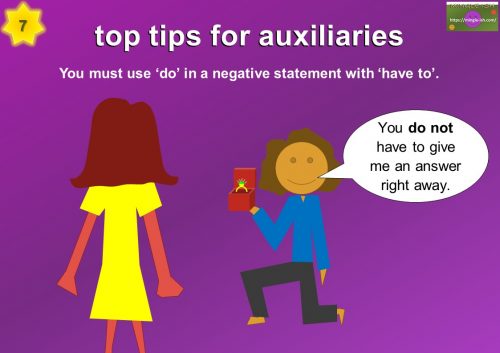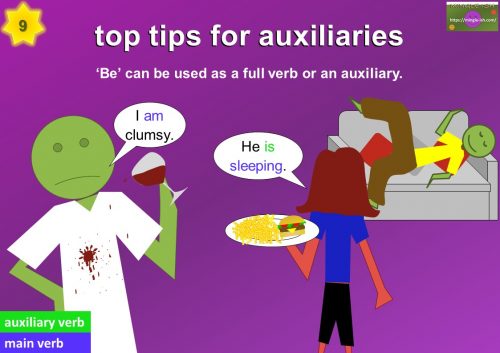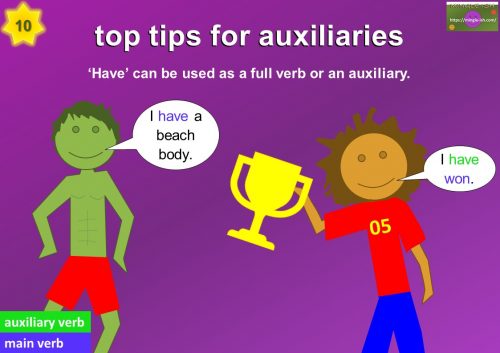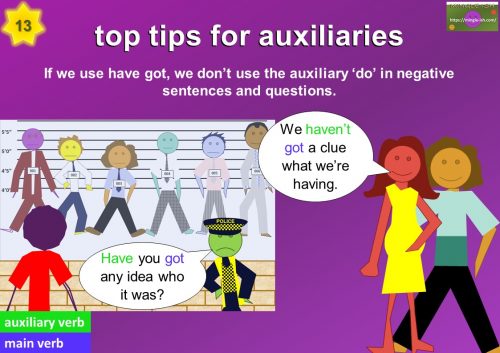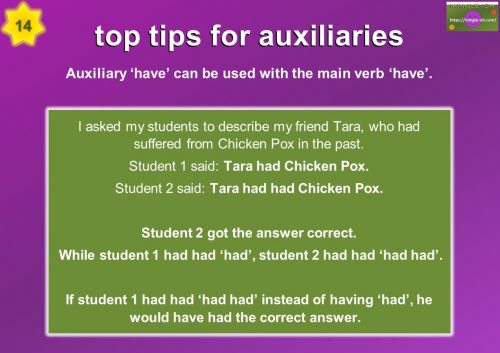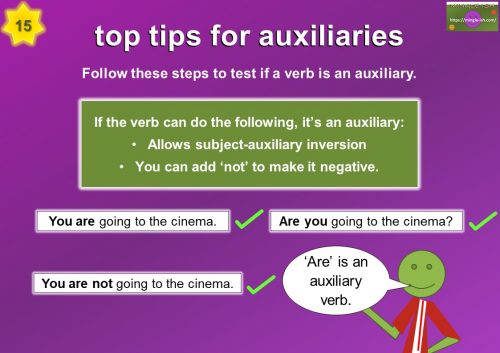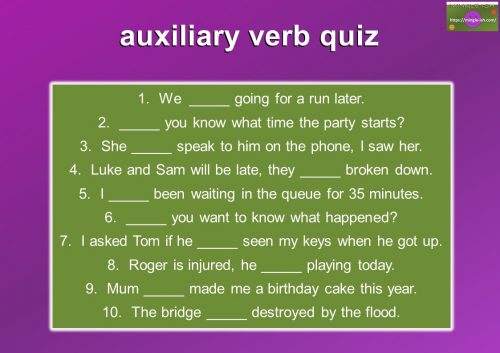Contents
helping verbs list
There are 3 main helping verbs in English and they take on the following forms according to the tense:
- to be
present – am, is, are
past simple – was, were
participle – been - to have
present – have, has
past simple – had
participle – had - to do
present – do, does
past simple – did
participle – done
I bet you’re thinking, they look familiar! In fact, they look exactly the same as normal verbs, don’t they? This is correct as they are normal verbs, well…they can be. However, they can also function as a helping or auxiliary verb.
HOT TIP: They are all irregular verbs and very common ones at that. It’s worth learning all three forms of these verbs to help you create grammatically correct sentences.
helping verbs expressing tense
Helping verbs can be used to express some of the tenses. I’ve made the helping verb in bold and the main verb in italic. Let’s take a look at a few examples.
helping verbs expressing the continuous tense
The verb ‘to be’ helps form the continuous tense to show ongoing actions.
- The shark is trying to catch fish. (present continuous)
- The shark was trying to catch fish. (past continuous)
- The shark will be trying to catch fish later. (future continuous)
HOT TIP – The word ‘will’ along with the auxiliary verb ‘be’ helps form the future continuous tense. ‘Will’ is a different type of helping verb called a modal auxiliary verb.
Helping verbs expressing the perfect tense
The verb ‘to have’ helps form the perfect tense to show completed actions.
- James has drunk three cocktails. (present perfect)
- James had drunk three cocktails before noon. (past perfect)
- James will have drunk eight cocktails by the end of the day.(future perfect)
Helping verbs expressing the perfect continuous tense
The verb ‘to have’ and ‘been’ help form the perfect continuous tenses to show when an ongoing action has been completed.
- Colin has been swimming for an hour and a half. (present perfect continuous)
- Colin had been swimming for two hours until he got cold. (past perfect continuous)
- Colin will have been swimming for two hours at 3pm. (future perfect continuous)
helping verbs expressing voice
They can also be used to expressive the passive voice. The passive voice is a structure where the object of a sentence performs the action (Object + Verb + Subject). In a normal sentence (active voice). The subject perform the action, and the object receives it (Subject + Verb + Object). Let’s see some examples.
helping verbs expressing voice – simple tenses
The verb ‘to be’ helps form the simple tenses in the passive voice. The modal auxiliary ‘will’ also helps form the future simple tense.
- The burger is eaten by the rat. (present simple)
- The burger was eaten by the rat. (past simple)
- The burger will be eaten by the rat. (future simple)
helping verbs expressing voice – continuous tenses
The verb ‘to be’ and ‘being’ help form the continuous tenses in the passive voice.
- The tortoise is being carried by the elephant. (present continuous)
- The tortoise was being carried by the elephant. (past continuous)
helping verbs expressing voice – perfect tenses
The verb ‘to be’ and ‘been’ help form the perfect tenses in the passive voice.
- The joy rider has been chased by the police. (present perfect)
- The joy rider had been chased by the police. (past perfect)
helping verbs expressing mood
Helping verbs can be used to express various moods, let’s see how.
helping verbs expressing the interrogative mood
The verb ‘to be’ helps form the interrogative mood in the present simple. This simply means, asking a question. The structure is auxiliary verb + person + main verb +?. For example:
- Do I like cherry pie?
- Do you (singular) like cherry pie?
- Does he/she/it like cherry pie?
- Do we like cherry pie?
- Do you (plural) like cherry pie?
- Do they like cherry pie?
This can be changed to the past simple by using ‘did’, the past simple form of ‘to do’. For example:
- Did you watch the game?
- Did she get her hair done?
- Did you give the kids their lunch money?
For the continuous tense, we use the helping verb ‘to be’. For example:
- Is he watching the sunset? (present continuous)
- Was he watching the sunset? (past continuous)
- Will he be watching the sunset today? (future continuous)
HOT TIP – The future continuous tense also uses the modal auxiliary verb ‘will’.
For the perfect tense, we use the helping verb ‘to have’. For example:
- Has he drunk his milk? (present perfect)
- Had he drunk his milk before napping? (past perfect)
- Will he have drunk his milk before bed? (future perfect)
For the perfect continuous tense, we use the helping verbs ‘to have’ and ‘been’. For example:
- Has he been revising all day? (present perfect continuous)
- Had he been revising all day? (past perfect continuous)
- Will he have been revising all day? (future perfect continuous)
Here’s a quick example of the interrogative mood structure for all the tenses:
- present simple – Does she eat bread?
- present continuous – Is she eating bread?
- present perfect – Has she eaten bread?
- present perfect continuous – Has she been eating bread?
- past simple – Did she eat bread?
- past continuous – Was she eating bread?
- past perfect – Had she eaten bread?
- past perfect continuous – Had she been eating bread?
- future with going to – Is she going to eat bread?
- future simple – Will she eat bread?
- future continuous – Will she be eating bread?
- future perfect – Will she have eaten bread?
- future perfect continuous – Will she have been eating bread?
helping verbs expressing the imperative mood
Helping verbs can be used to express the imperative mood. In simple terms, the imperative means to give an order, instructions, or advice. It is most commonly used in the present tense in the second person. The helping verb ‘to do’ helps form the imperative mood, let’s see how.
Do + verb makes an imperative sound a bit posher and more polite. For example:
- Do sit down and relax, the interviewer will be along shortly.
- Do help yourselves to tea and coffee.
- Do start, I don’t want your food to get cold.
Don’t + verb makes a negative imperative. You can use the full form ‘do not’, however it is more formal, and we tend to use the contracted form ‘don’t’. For example:
- Don’t take sweets from strangers.
- Do not enter the boiler room under any circumstances.
- Don’t feed the pigeons.
If you have an imperative (or negative imperative) sentence using the verb ‘to be’ as a main verb, you must add the auxiliary verb ‘to do’. For example:
- Don’t be silly, I’ll pay.
- Don’t be fooled by him, he’s a snake.
- Do be careful, the roads are icy.
- Do be a good girl for your granddad.
main verbs and helping verbs
How do I spot an auxiliary? I hear you ask. Well…as you are probably already aware, a sentence must contain a verb (an action or a state). The main verb in a sentence tells us what action or state is happening. To give the reader or listener a little more information, we accompany the main verb with an auxiliary verb.
The thing about auxiliaries is that they can also function as a main verb. Let’s see some examples:
- I am winning – ‘win’ is helped by the auxiliary ‘be’
- I am scared – ‘be’ stands alone as a main verb
- I have lost – ‘lost’ is helped by the auxiliary ‘have’
- I have pink hair – ‘have’ stands alone as a main verb
- Do you like frogs? – ‘like’ is helped by the auxiliary ‘do’.
- Yes, I do – ‘do’ stands alone as a main verb.
How about learning the most common regular and irregular verbs we have in English?
helping verbs and verb phrases
Sometimes, not even a helping verb gives enough information and phrases that include helping verbs are required. This happens especially if the action is ongoing or occurring alongside another event. Modal auxiliaries are often used in verb phrases to.
These phrases can contain between two and four words. The structure goes like this:
- The modal always comes before the auxiliary.
- The main verb always comes last.
HOT TIP – Adverbs that appear within, or beside the verb phrase are not part of it.
Here are some examples of verb phrases:
- She has eaten the whole cake.
- Luke is definitely losing (adverb not included)
- They have been playing since dawn.
- You might have seen this film before.
- I should have been performing tonight, but they cancelled.
- If I had stayed at home, I wouldn’t have fallen through the lake.
be, have, and do
Let’s look at the three auxiliaries that exist in English in a little more detail. They are very common so it’s worth revising their past, present and perfect forms. Modal verbs are also a type of auxiliary verb too. If you don’t know what they are, I suggest you find out.
Click the links below to learn about be, have, and do in more detail.
tips for auxiliaries
Have a read of these top tips for auxiliaries.
There are some additional auxiliary verbs, they are called modal auxiliary verbs. I suggest you take a look and learn their uses.
auxiliary verb quiz
Are you ready to test yourself?
answers : 1. are 2. do 3. did 4. have 5. have 6. do/don’t 7. had 8. isn’t 9. has/hasn’t 10. was/wasn’t
